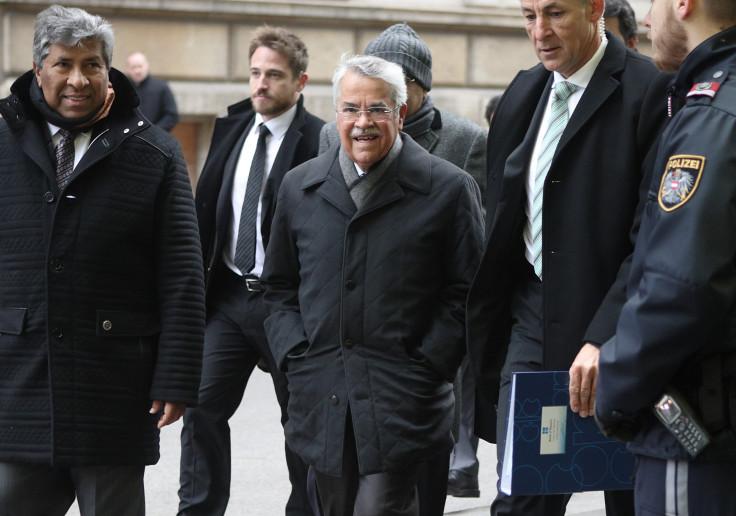OPEC Likely To Keep Saudi Policy Of High Oil Output To Battle US Shale Threat

When the Organization of the Petroleum Exporting Countries holds its semiannual meeting on June 5 in Vienna, Saudi Arabia should find it easier to maintain elevated oil production levels by the 12-nation bloc. The last time OPEC met, in November, the oil-rich kingdom had to convince fellow member states to keep the taps flowing amid a nearly 50 percent drop in crude prices.
But now that prices have rebounded about 40 percent from a six-year low in January, Ali Al-Naimi, the Saudi oil minister, will be able to carry some swagger to the meeting next week. With both U.S. shale production and oil company investments down, Al-Naimi will be able to tout his country’s policy as a success.
“The Saudis probably feel their strategy is working, and rightly so,” Francisco Blanch, Bank of America’s head of commodities research, told Bloomberg on Tuesday.
The number of U.S. rigs producing oil is down by more than half from the same time last year, to 885 from 1,857, according to Baker Hughes data. U.S. rig counts have declined for 24 consecutive weeks, though the declines are slowing and are soon expected to rebound as oil prices approach $60 a barrel. That’s where U.S. crude prices need to be to make U.S. production profitable. In January 2015, West Texas Intermediate crude dipped below $50 a barrel, down from about $100 in the same month the previous year.
At Saudi Arabia’s urging, OPEC decided in November to maintain output of 30 million barrels a day despite plunging oil prices. Last week, the International Energy Agency said OPEC was producing 31.2 million barrels a day, the most since September 2012, when global oil prices were above $90 a barrel. Saudi Arabia accounts for about a third of the supply.
The June 5 OPEC meeting takes place before the June 30 deadline for a final nuclear deal with Iran. If a deal between OPEC member Iran and six global powers is reached, more than 1 million barrels of oil per day would flow into the global market with the lifting of sanctions. Additional flows of Iranian oil could result in prices dropping $5 to $15 per barrel if sanctions are lifted, according to the U.S. Energy Information Administration.
Last week, Iran's Deputy Oil Minister Rokneddin Javadi said he didn’t think OPEC would cut production output anytime soon. Iran and Venezuela were the most outspoken critics of Saudi Arabia’s policy to maintain output in order to keep market share and hit U.S. shale oil producers, whose extraction costs are higher.
© Copyright IBTimes 2024. All rights reserved.












